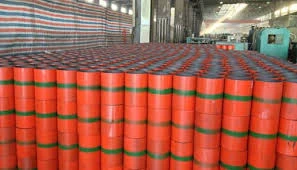- Afrikaans
- Albanian
- Amharic
- Arabic
- Armenian
- Azerbaijani
- Basque
- Belarusian
- Bengali
- Bosnian
- Bulgarian
- Catalan
- Cebuano
- Corsican
- Croatian
- Czech
- Danish
- Dutch
- English
- Esperanto
- Estonian
- Finnish
- French
- Frisian
- Galician
- Georgian
- German
- Greek
- Gujarati
- Haitian Creole
- hausa
- hawaiian
- Hebrew
- Hindi
- Miao
- Hungarian
- Icelandic
- igbo
- Indonesian
- irish
- Italian
- Japanese
- Javanese
- Kannada
- kazakh
- Khmer
- Rwandese
- Korean
- Kurdish
- Kyrgyz
- Lao
- Latin
- Latvian
- Lithuanian
- Luxembourgish
- Macedonian
- Malgashi
- Malay
- Malayalam
- Maltese
- Maori
- Marathi
- Mongolian
- Myanmar
- Nepali
- Norwegian
- Norwegian
- Occitan
- Pashto
- Persian
- Polish
- Portuguese
- Punjabi
- Romanian
- Russian
- Samoan
- Scottish Gaelic
- Serbian
- Sesotho
- Shona
- Sindhi
- Sinhala
- Slovak
- Slovenian
- Somali
- Spanish
- Sundanese
- Swahili
- Swedish
- Tagalog
- Tajik
- Tamil
- Tatar
- Telugu
- Thai
- Turkish
- Turkmen
- Ukrainian
- Urdu
- Uighur
- Uzbek
- Vietnamese
- Welsh
- Bantu
- Yiddish
- Yoruba
- Zulu
casing pup joint
Understanding Casing Pup Joints in Oil and Gas Drilling
Casing pup joints are essential components in the oil and gas drilling industry, designed to facilitate the efficient and safe completion of wells. These short lengths of pipe, typically ranging from 2 to 10 feet in length, serve to connect various sections of casing or tubing strings. Their primary function is to allow for adjustments in the length of the drill string and to accommodate changes in wellbore geometry.
Understanding Casing Pup Joints in Oil and Gas Drilling
In addition to providing structural support, casing pup joints also play a role in pressure management. Oil and gas wells operate under high pressure, and the careful design of pup joints ensures that they can withstand these conditions without compromising safety. The materials used in manufacturing pup joints are often selected for their strength and resistance to corrosive substances, further enhancing their reliability in challenging environments.
casing pup joint

Moreover, the installation of casing pup joints can significantly simplify the drilling process. Their lightweight nature allows for easy handling and installation, reducing the time and labor required during the drilling phase. This efficiency not only lowers operational costs but also minimizes the environmental impact associated with drilling activities.
Furthermore, the use of casing pup joints can contribute to the overall efficiency of hydrocarbon recovery. By facilitating better structural integrity and pressure management, these components help enhance the flow rates of oil and gas, resulting in higher yields from each well. This is crucial in an industry that faces increasing demand for energy and pressure to operate efficiently.
In conclusion, casing pup joints are a vital component of modern oil and gas drilling operations. Their ability to provide structural support, manage pressure, and enhance operational efficiency makes them indispensable in the field. As the industry continues to evolve, the significance of casing pup joints will undoubtedly grow, reinforcing their role in the quest for safe and efficient hydrocarbon extraction. Understanding these components is essential for anyone involved in drilling operations, as their proper use can lead to more successful outcomes in this critical sector.
-
Tubing Pup Joints: Essential Components for Oil and Gas OperationsNewsJul.10,2025
-
Pup Joints: Essential Components for Reliable Drilling OperationsNewsJul.10,2025
-
Pipe Couplings: Connecting Your World EfficientlyNewsJul.10,2025
-
Mastering Oilfield Operations with Quality Tubing and CasingNewsJul.10,2025
-
High-Quality Casing Couplings for Every NeedNewsJul.10,2025
-
Boost Your Drilling Efficiency with Premium Crossover Tools & Seating NipplesNewsJul.10,2025







